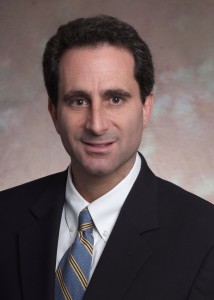Honokiol, the versatile compound found by Emory dermatologist Jack Arbiser in the cones of magnolia trees, makes a surprise appearance in a recent paper in Nature Medicine.

Jack Arbiser, MD, PhD, and colleagues originally isolated honokiol from magnolia cones. It can also be found in herbal teas.
The paper, from Sabrina Diano, Tamas Horvath and colleagues at Yale, probes the role of reactive oxygen species (ROS) in the hypothalamus, a part of the brain that regulates appetite. In the paper, Horvath’s laboratory uses honokiol as a super-antioxidant, mopping up ROS that suppress appetite. Arbiser initiated the collaboration with Horvath after finding, while working with Emory free radical expert Sergei Dikalov, how effective honokiol is at neutralizing ROS.
The paper is intriguing partly because it’s an example of a situation where ROS, often thought to be harmful because of their links to aging and several diseases, are actually beneficial. In this case, they provide a signal to stop eating. A recent paper from Andrew Neish’s lab at Emory provides another example, where probiotic bacteria stimulate production of ROS, which promote healing of the intestine.
Arbiser notes that since honokiol can increase appetite, the compound may be helpful in situations where doctors want patients to eat more.
“This might be particularly valuable in patients who are nutritionally deficient due to chemotherapy and provides a rationale for adding honokiol to chemotherapy regimens,†he writes.

Satiety producing neurons in the hypothalamus
A note of caution: in the Nature Medicine paper, honokiol is infused directly into the brain.
Honokiol has been shown to counteract inflammation and slow the growth of blood vessels (important in fighting cancer). Collaborating with Arbiser, Emory endocrinologist Neale Weitzmann has recently found that honokiol stimulates osteoblasts, the cells that build bone, suggesting that it could reduce bone loss in osteoporosis.













